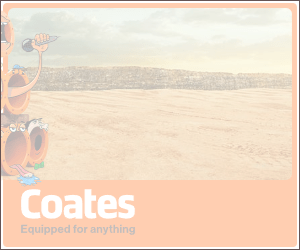Earlier this year, the government’s New Vehicle Efficiency Standard (NVES) came into effect, with carmakers issued penalties for exceeding set emissions limits.
For ‘Type 1’ passenger vehicles, this limit is 141g/km in 2025, before reducing to 117g/km in 2026, 92g/km in 2027, 68g/km in 2028 and 58g/km in 2029.
For ‘Type 2’ light-commercial and off-road vehicles such, the target is 210g/km in 2025, 180g/km in 2026, 150g/km in 2027, 122g/km in 2028 and 110g/km in 2029.
In both vehicle types, carmakers are fined $100 for every g/km the vehicles they sell exceed the limits, encouraging the addition of more efficient and cleaner vehicles to their local lineups.

This has attracted criticism from some brands and consumers, with some cars – such as the Ford Mustang and Nissan Patrol – already receiving price hikes due in part to the NVES limits.
Speaking to Australian media, Renault Australia managing director Glen Sealey doesn’t share the same sentiment, arguing brands must follow the regulations set out.
“I would say, from a Renault perspective, and I would say I’m considering carefully the words, we always respect the umpire’s decision,” Sealey said when asked about his thoughts on the NVES.

“That’s the regulatory framework that’s out there today, and that’s the framework that we operate under.
“Renault as a brand is European based, so we have a fantastic product range to operate within an environment where NVES is in play.
“When you look at Renault, we have typically four-cylinder engines, very efficient, we are lightweight, so you would have to say no. We are well positioned to operate within an NVES environment.”
In addition to NVES copping criticism, ANCAP – Australia’s peak body for new car safety – has also been in the spotlight in recent years. Some vehicles rated by the organisation take their ratings directly from its European counterpart Euro NCAP, while some are tested locally.

The scoring of vehicles has also raised questions, with an overall star rating based on the lowest score of four criteria – adult and child occupant protection, pedestrian protection and safety assist systems.
While a car could get perfect scores for how it protects its occupants in a crash, a lack of active safety system can see its overall rating drop – something not immediately apparent to most consumers.
It isn’t a government requirement to get a certain ANCAP safety rating, however some companies won’t allow cars without a five-star rating on their fleets. Likewise, a consumer is more likely to buy a car with a higher safety rating than an equivalently lower-rated vehicle.

When asked what ANCAP rating is expected for the new Renault Duster – rated by Euro NCAP as a three-star vehicle, though with different equipment and badged as a Dacia – Sealey said he shares his viewpoint on the safety body as with NVES.
“I’ll probably go back to what I was talking about with NVES. It’s the environment you are operating in, and ANCAP has a job to do.
“From my perspective, if I go back to my old rugby days, I’m always gonna abide by the umpire’s decision, and today they’re the umpire. So we will abide by those decisions.”
For context, the Dacia Duster has a three-star Euro NCAP rating. It recorded scores of 70 per cent for adult occupant protection, 84 per cent for child occupant protection, 60 per cent for vulnerable road user protection, and 57 per cent for safety assist systems.













Discussion about this post